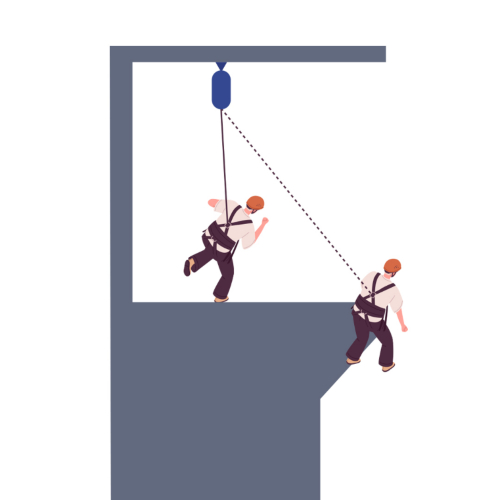What is fall factor?
Fall factor is a calculation that’s used to determine the severity of a fall. It can be broken down into a simple equation:
Fall factor (f) = the ratio of fall height (h) to rope length (L)
When working at height, you should ideally use a fall restraint system to keep workers away from points where a fall may occur. If this is not practical, a fall arrest system can be used to catch workers mid-fall.
If you have decided to rely on a fall arrest system, it’s important to calculate fall factor in order to keep workers as safe as possible in the event of a fall.
When designing a fall arrest system, it’s important to take fall factor into account. Understanding fall factor will help you to select the right lanyard length and position the anchor point optimally to minimise risk when working at height.
READ MORE: What’s the Difference Between Fall Arrest & Fall Restraint?
How to calculate fall factor
Fall factor is a simple calculation: take the distance of the fall and divide it by the length of rope or lanyard available to arrest the fall.
For example, if you’re using a 2m lanyard and the fall distance is 0.5m, your fall factor is 0.25 (because 0.5 divided by 2 equals 0.25).
Ideally, you want the fall factor to be as close to 0 as possible. For this reason, it is advisable to place the anchor point above the user to minimise the free fall distance.

Imagine you’re working on a platform that sits 2m above the ground. To achieve a fall factor of 0, you would need to be anchored to a point 2m above that platform. Anchoring the rope above you is the safest thing to do: it reduces the fall factor by putting the rope further above the ground than the platform. In this case, you may fall off the platform, but because the 2m rope is 2m above the platform, you won’t fall very far!
Placing the anchor point at shoulder height will give a fall factor calculation of approximately 1 (depending on the user’s height). This is acceptable, but less safe than placing the anchor point above the user because they will fall further before their fall is arrested.
If your anchor point is at the same level as the platform itself, which we do not recommend, there will be even more slack in the rope, allowing the user to fall even further before they are caught. This can be dangerous, so a foot-level anchor point should only be used if no other options are available.
Unsure what sort of fall protection equipment you need? Contact the SafetyLiftinGear team for expert advice.
Buy or Hire Fall Arrest Equipment

